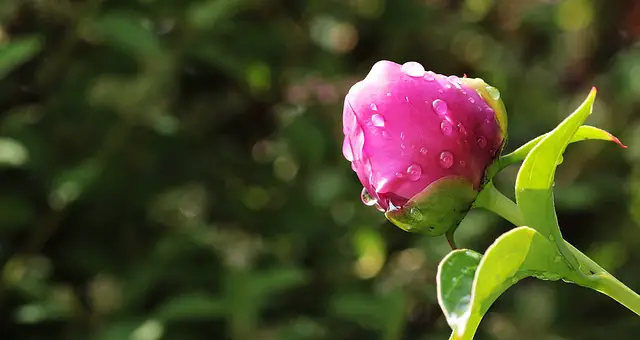Peonies are a popular and beautiful flowering plant that many gardeners love to grow. However, one common problem that gardeners may encounter is when their peonies start to turn brown. This can be a frustrating issue to deal with, as it can affect the overall appearance of the plant and even cause it to die if not addressed promptly.
Understanding the reasons why peonies turn brown is essential to effectively address the issue. There are several factors that can cause this problem, including environmental factors, diseases, pests, and poor maintenance practices.
By identifying the underlying cause of the issue, gardeners can take the necessary steps to treat and prevent it from happening in the future.
Key Takeaways on Peonies Turning Brown
- Identifying the underlying cause of brown peonies is essential to effectively address the issue.
- Common causes of brown peonies include environmental factors, diseases, pests, and poor maintenance practices.
- Treating and preventing brown peonies involves proper care and maintenance, including watering, fertilizing, pruning, and pest control measures.
Also don’t miss:
- Why Are My Mandevilla Leaves Turning Brown?
- Why Are My Magnolia Leaves Turning Brown?
- Why Are My Ivy Leaves Turning Brown?
Understanding Peonies
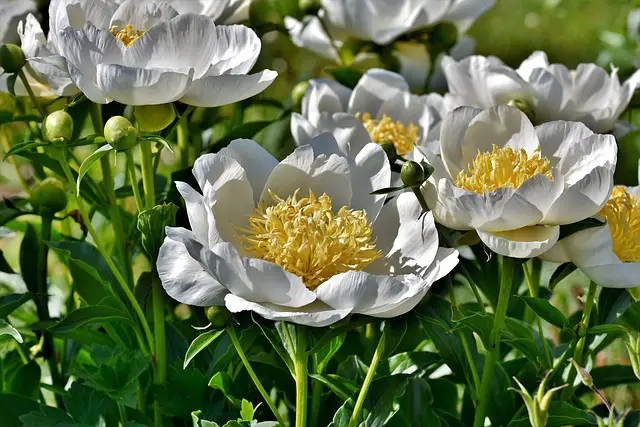
Peonies are popular flowering plants that can add a touch of elegance and beauty to any garden. They are available in a variety of colors, including pink, red, white, and yellow, and come in two main types: tree peonies and herbaceous peonies.
Tree peonies are woody shrubs that produce large, fragrant flowers, while herbaceous peonies are perennials that die back to the ground each year.
Peonies are known for their large, showy blooms that can last for several weeks in the spring and early summer. They are also valued for their attractive foliage, which can stay green and healthy-looking throughout the growing season.
Peonies are relatively easy to care for, but they can be susceptible to a variety of problems, including turning brown. Some of the most common reasons why peonies turn brown include root issues, fungal diseases, and insect infestations.
To keep peonies healthy and looking their best, it is important to provide them with the right growing conditions. This includes planting them in well-drained soil, providing them with adequate water and sunlight, and keeping them free of weeds and other pests.
Identifying Brown Peonies
Peonies are popular garden plants that produce large, showy blooms in a range of colors. However, brown peonies can be a sign of a problem with the plant. It is important to identify the cause of the brown color to determine the best course of action to take. Here are some common symptoms to look for:
- Brown Leaves: Brown leaves on a peony plant can be a sign of several issues, including root problems, fungal diseases, or insect infestations. If the leaves are turning brown and withering, it may be due to a lack of water or nutrients. If there are yellow spots or black spots on the leaves, it may be a fungal disease.
- Brown Stems: Brown stems on a peony plant can be a sign of fungal diseases or insect infestations. If the stems are turning brown and withering, it may be due to a lack of water or nutrients. If there are black spots or yellow spots on the stems, it may be a fungal disease.
- Brown Buds: Brown buds on a peony plant can be a sign of bud blast, which is a fungal disease that affects young flower buds. The buds turn brown and fail to open, and once affected, a flower bud cannot be saved.
- Other Signs of Discoloration: If the young shoots are turning brown or the entire plant is drooping, it may be due to a lack of water or nutrients. If the plant is turning brown and withering, it may be due to a fungal disease or insect infestation.
It is important to inspect the plant regularly for any signs of discoloration or withering, and to take action promptly to prevent the problem from spreading. If you are unsure about the cause of the brown color, consult a professional or a gardening expert to identify the issue and recommend the best course of action.
Common Diseases and Pests
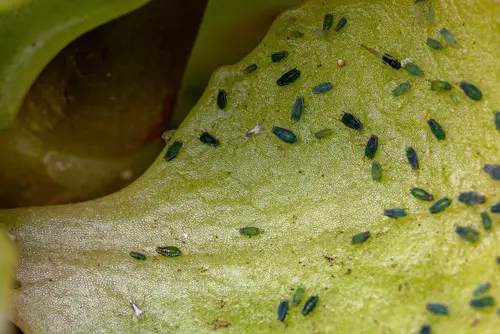
Peonies are susceptible to various diseases and pests that can cause their leaves to turn brown. Some of the most common diseases and pests that affect peonies include:
- Botrytis blight: This fungal disease is one of the most common diseases that affect peonies. It is caused by Botrytis paeoniae and can infect stems and leaves, causing blackened areas and sometimes a gray mold may be accompanied. Prevention is the best method to avoid issues-cut herbaceous peonies to the ground as they begin to go dormant in the fall. Neem oil can be used to treat the disease.
- Powdery mildew: This fungal disease is characterized by a white or gray powdery coating on the leaves. It is caused by various fungi and can be prevented by keeping the plants well-spaced and ensuring good air circulation. Sulfur or neem oil can be used to treat the disease.
- Leaf blotch: This fungal disease is characterized by brown or black spots on the leaves. It is caused by various fungi and can be prevented by removing infected leaves and keeping the plants well-spaced. Fungicides can be used to treat the disease.
- Phytophthora blight: This fungal disease is characterized by brown or black spots on the leaves and stems. It is caused by various fungi and can be prevented by keeping the plants well-drained and avoiding over-watering. Fungicides can be used to treat the disease.
- Root nematodes: These pests are microscopic worms that can damage the roots of peonies, causing the leaves to turn brown. They can be prevented by keeping the soil well-drained and avoiding over-watering. Nematode-resistant varieties of peonies are also available.
- Scale insects: These pests are small, oval-shaped insects that attach themselves to the stems and leaves of peonies, causing the leaves to turn brown and wilt. They can be prevented by keeping the plants well-spaced and using insecticidal soap or neem oil to treat the infestation.
- Mealybugs: These pests are small, white, cottony insects that attach themselves to the stems and leaves of peonies, causing the leaves to turn brown and wilt. They can be prevented by keeping the plants well-spaced and using insecticidal soap or neem oil to treat the infestation.
Environmental Factors
Peonies are sensitive plants that require specific environmental conditions to thrive. Environmental factors such as sun exposure, soil quality, water, and temperature can all contribute to peonies turning brown. In this section, we will explore the various environmental factors that can cause peonies to turn brown.
1. Sun Exposure
Peonies require full sun to partial shade to grow and bloom properly. If they are not receiving enough sunlight, their leaves may turn brown and fall off. On the other hand, if they are exposed to too much sun, their leaves may also turn brown and wilt. It is important to ensure that peonies are planted in an area that receives the appropriate amount of sunlight.
2. Soil Quality
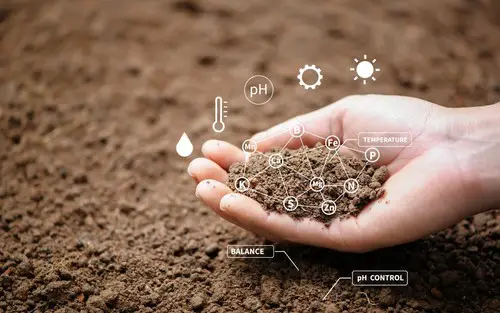
Soil quality is another important factor that can contribute to peonies turning brown. Peonies require well-draining, moist soil that is rich in nutrients.
If the soil is too acidic or alkaline, it can affect the plant’s ability to absorb nutrients, which can lead to brown leaves. It is important to test the soil pH and amend it accordingly to ensure that it is suitable for peonies.
3. Water
Peonies require regular watering, especially during the summer months. Insufficient watering can cause the leaves to turn brown and wilt. On the other hand, overwatering can lead to poor air circulation around the roots, which can cause root rot and brown leaves.
It is important to ensure that the soil is moist but not waterlogged.
4. Temperature
Extreme temperatures can also cause peonies to turn brown. High temperatures during the summer months can cause the leaves to wilt and turn brown. On the other hand, cold temperatures during the winter months can cause the leaves to die back.
It is important to ensure that peonies are planted in an area that is protected from extreme temperatures.
5. Soil Drainage
Peonies require well-draining soil to grow and thrive. Poorly draining soil, such as clayey soil, can cause water to accumulate around the roots, which can lead to root rot and brown leaves. It is important to ensure that the soil is free-draining and that there is adequate airflow around the plant.
Peony Care and Maintenance
Peonies are low maintenance flowers that can thrive in sunny conditions and bloom for up to 10 days. However, proper care and maintenance are still essential to keep them healthy and prevent them from turning brown. Here are some tips to help you care for your peonies:
1. Watering
Peonies require regular watering, especially during dry spells. They need about 1 inch of water per week, either from rain or irrigation. It’s important to water the soil around the plant, not the leaves, to prevent water from sitting on the foliage and causing fungal diseases.
Overwatering can also lead to root rot, which can cause the plant to turn brown and die.
2. Nutrients
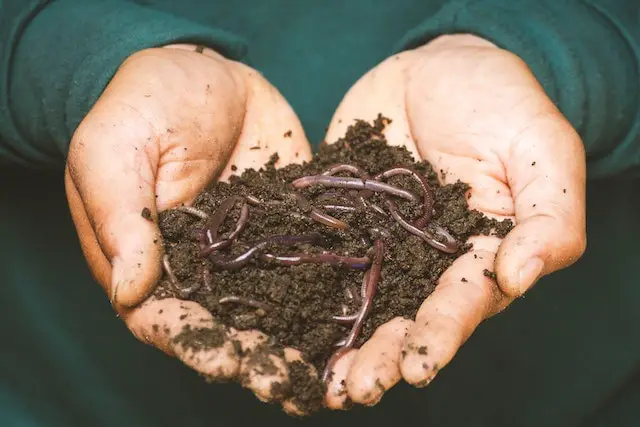
Peonies need nutrients to grow and bloom. You can fertilize them in the spring with a balanced fertilizer, such as a 10-10-10 or 5-10-5 formula. However, over-fertilizing can cause the plant to produce too much foliage and not enough flowers. It’s important to follow the manufacturer’s instructions and not exceed the recommended amount.
3. Weeds
Weeds can compete with peonies for water and nutrients, which can cause them to turn brown. It’s important to keep the area around the plant weed-free by pulling them out by hand or using a hoe. You can also mulch around the plant to prevent weeds from growing.
4. Root Issues
Peony leaves can turn brown if there isn’t enough water getting to the roots. This can be caused by not watering your peonies sufficiently, having too many weeds near the base of the plant, or having clayey soil that prevents water from flowing freely.
The plant will begin to droop if there isn’t enough water. To prevent this, make sure the soil is well-draining and water the plant regularly.
5. Deep Planting
Peonies should be planted deep enough to allow for proper root development. The planting hole should be about 2 feet wide and 1 foot deep. The top of the tuber should be about 2 inches below the soil surface. If the plant is planted too shallow, it can cause the roots to dry out and the plant to turn brown.
6. Stick
Peonies can benefit from staking, especially if they have large flowers that can weigh down the stems. You can use bamboo stakes or metal hoops to support the plant. It’s important to stake the plant early in the season, before the flowers bloom, to prevent damage to the roots.
Treatment and Prevention
Once you have identified the cause of your peony leaves turning brown, you can take steps to treat and prevent the issue from recurring. Here are some common treatments and prevention methods:
1. Watering
If your peony leaves are turning brown due to lack of water, make sure to water your plants regularly. Peonies require about an inch of water per week, and it’s best to water them deeply once or twice a week rather than shallowly every day. Be careful not to overwater, as this can lead to root rot and other problems.
2. Soil
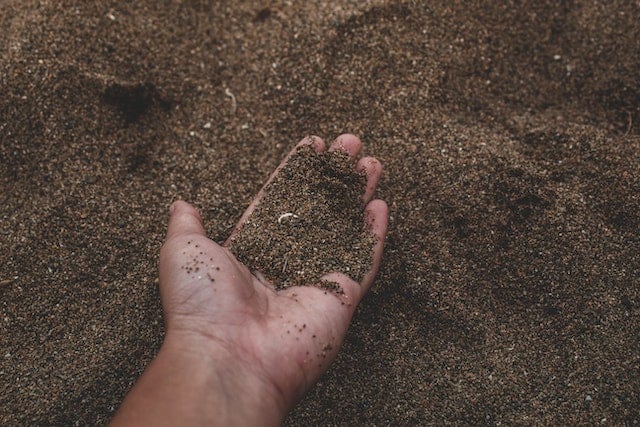
If your soil is too dry or too compacted, your peony plants may not be getting the nutrients they need. Consider adding compost or other organic matter to improve soil quality and ensure adequate drainage.
If your soil is too acidic, you may need to add lime to raise the pH level. If your soil is too alkaline, you may need to add sulfur or other limestone-based products to lower the pH level.
3. Insects and Diseases
If your peony leaves are turning brown due to insect infestations or diseases, you may need to apply insecticidal spray or other treatments to get rid of the pests. Be sure to read the label carefully and follow all instructions to avoid damaging your plants or harming beneficial insects.
4. Pruning
If your peony leaves are turning brown due to fungal infections or other diseases, you may need to prune affected leaves and stems to prevent the spread of the infection. Be sure to sterilize your pruning shears between cuts to avoid spreading the disease.
5. Fertilizer
If your peony leaves are turning brown due to nutrient deficiencies, you may need to apply fertilizer to provide your plants with the necessary nutrients.
Peonies require a balanced fertilizer with equal amounts of nitrogen, phosphorus, and potassium. Be sure to follow all instructions carefully and avoid over-fertilizing, as this can lead to other problems.
Frequently Asked Questions
How can I prevent my peony buds from turning brown?
To prevent peony buds from turning brown, make sure the peony plant is getting enough water. Peonies need about 1 inch of water per week, either from rainfall or irrigation.
Mulching the soil around the peony plant can also help retain moisture and prevent the soil from drying out. Additionally, avoid over-fertilizing the plant as this can cause the buds to brown and die.
What causes peony leaves to turn brown and crispy?
Peony leaves can turn brown and crispy due to a lack of water or too much sun exposure. Peonies require well-draining soil and should not be planted in an area where water tends to pool.
Peonies also prefer partial shade and can suffer if exposed to too much sunlight. Over-fertilizing the plant can also cause the leaves to turn brown and crispy.
What is causing my peony flowers to turn brown?
Peony flowers can turn brown due to a fungal disease called botrytis blight. This disease is caused by wet conditions and can be prevented by ensuring that the peony plant has good air circulation.
Deadheading the spent flowers and removing any infected plant debris can also help prevent the spread of the disease.
How can I treat peony leaf blotch?
Peony leaf blotch is a fungal disease that causes brown spots on the leaves. To treat peony leaf blotch, remove any infected leaves and dispose of them in the trash.
Avoid watering the plant from above and instead water at the base of the plant. Applying a fungicide can also help control the disease.
What is peony blight and how can I prevent it?
Peony blight is a fungal disease that causes the stems and leaves of the peony plant to turn brown and wilt. To prevent peony blight, avoid over-fertilizing the plant and ensure that the plant has good air circulation.
Remove any infected plant debris and avoid watering the plant from above. Applying a fungicide can also help control the disease.
Should I cut off brown leaves from my peonies?
Yes, it is recommended to cut off brown leaves from peonies as they can be a sign of disease or stress on the plant. Use clean, sharp pruning shears to remove the affected leaves and dispose of them in the trash. Be sure to sanitize the pruning shears after use to prevent the spread of disease.

Hey, I’m Lisa and I’ve been an avid gardener for over 30 years. I love writing, talking and living in the garden! Feel free to connect with me on my socials below

